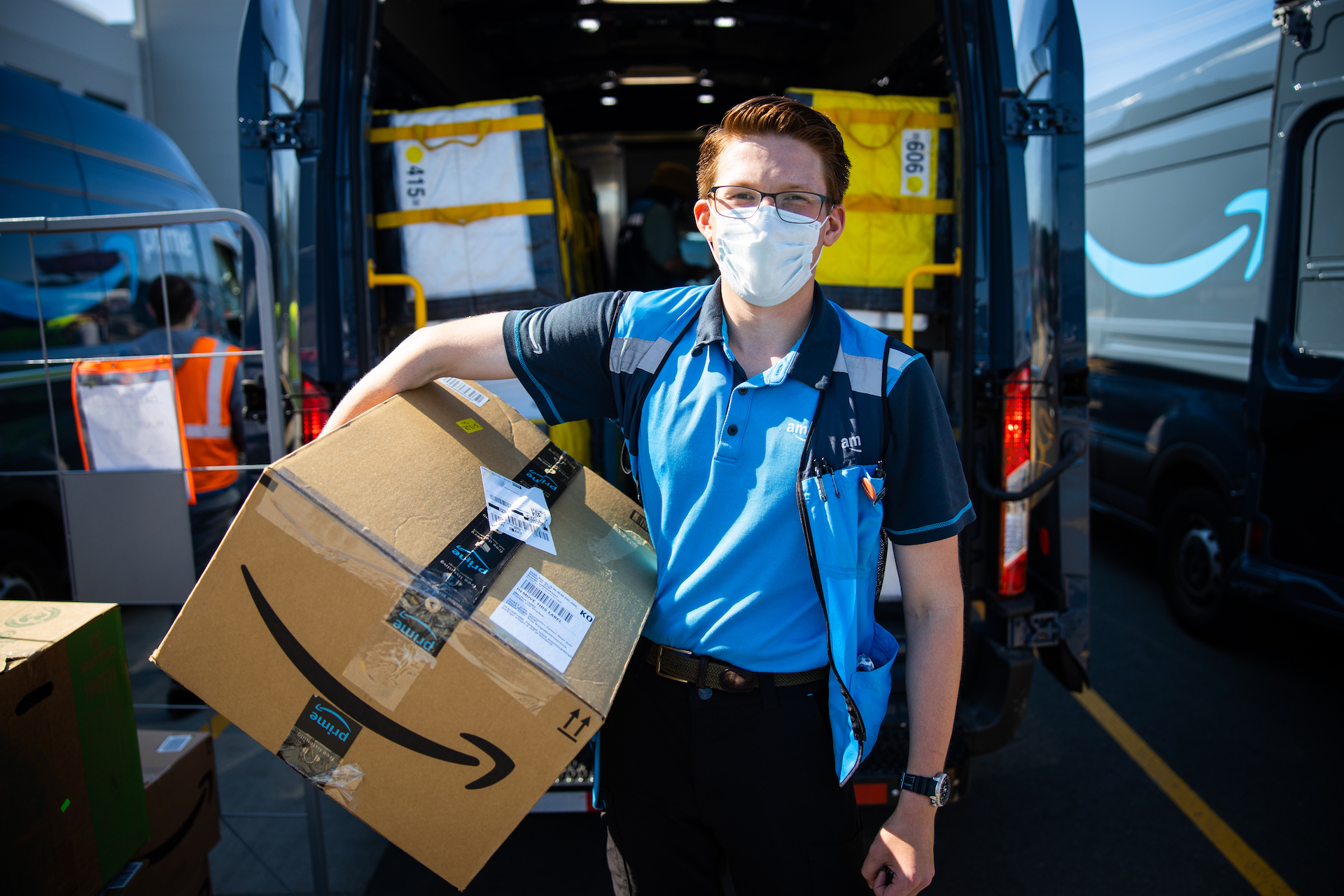In the first quarter, Amazon had to cope with an environment where a weakening pandemic, snarled supply chains and international turmoil hit operations and pressured earnings.
Net loss in the quarter was $3.84 billion, or $7.56 per diluted share, the company reported, versus net income of $8.11 billion, or $15.79 per diluted share, in the year-before period.
First-quarter 2022 net loss included a pre-tax valuation loss of $7.6 billion included in non-operating expense from a common stock investment in Rivian Automotive. Without the loss, diluted earnings per share would have been approximately $7.38.
Whichever the case, Amazon fell short of a MarketBeat-published analyst consensus estimate on diluted earnings per share, at $9.33, and revenue, at $116.52.
Net sales increased 7% to $116.44 billion in the quarter, compared with $108.52 billion in the year-earlier period while product sales were $56.46 billion versus $57.49 billion, Amazon stated. Excluding the $1.8 billion unfavorable impact from year-over-year changes in foreign exchange rates throughout the quarter, net sales increased 9% versus the 2021 quarter.
Operating income decreased to $3.67 billion from $8.87 billion in the year-prior period.
Net sales in North America were $69.24 billion versus $64.37 billion in the year-previous quarter, Amazon indicated, while operating loss was $1.57 billion versus operating income of $3.45 billion.
In detailing company upcoming events and highlights, Amazon pointed out that this year Prime Day will take place in July.
Amazon launched Amazon Aware in the quarter, it stated, a new brand of consciously created everyday products that span the apparel, home and beauty categories, and that are made from materials such as recycled polyester, organic cotton, and bio-based ingredients. Amazon Aware products are certified as carbon neutral and feature certifications that are part of Amazon’s Climate Pledge Friendly program, the company maintained.
In addition, Amazon announced Buy with Prime, a new benefit for Prime members in the United States that extends the convenience of shopping with Prime to online stores beyond Amazon.com. Prime members can shop directly from participating merchants’ online stores using their Prime member benefits including fast and free delivery.
For the first time, Amazon introduced Just Walk Out technology at two Whole Foods Market stores, one in Washington, D.C., and Sherman Oaks, CA, the company stated. Just Walk Out technology also rolled out at new third-party locations, including travel retailer WHSmith in LaGuardia Airport in New York City, UBS Arena in New York and Minute Maid Park in Houston, TX. Also, a food and beverage store equipped with Just Walk Out technology and Amazon One will open soon at T-Mobile Park in Seattle, according to the company. The combination of technologies will give fans the option to enter the store with their palm or credit card, pick up what they want and leave without stopping to check out.
Amazon opened eight new Amazon Fresh grocery stores in the quarter and now has 46 Amazon Fresh grocery stores around the world. The newest Amazon Fresh store in Seattle is the world’s first grocery store seeking Zero Carbon certification from the International Future Living Institute and features more than a dozen design upgrades anticipated to save nearly 185 tons of carbon emissions each year versus an industry-standard grocery store.
In another first during the quarter, Amazon opened a new, larger Amazon Go store format designed for suburban customers in Mill Creek, WA. The new format features Amazon’s Just Walk Out technology, an expanded selection of grab-and-go food and beverage items and a made-to-order kitchen with freshly prepared, customizable breakfast and lunch items. Amazon has plans to expand the suburban format to the Los Angeles area in the coming months, it asserted.
“The pandemic and subsequent war in Ukraine have brought unusual growth and challenges,” said Andy Jassy, Amazon CEO, in announcing the first-quarter results. “With AWS growing 34% annually over the last two years, and 37% year-over-year in the first quarter, AWS has been integral in helping companies weather the pandemic and move more of their workloads into the cloud. Our consumer business has grown 23% annually over the past two years, with extraordinary growth in 2020 of 39% year-over-year that necessitated doubling the size of our fulfillment network that we’d built over Amazon’s first 25 years and doing so in just 24 months. Today, as we’re no longer chasing physical or staffing capacity, our teams are squarely focused on improving productivity and cost efficiencies throughout our fulfillment network. We know how to do this and have done it before. This may take some time, particularly as we work through ongoing inflationary and supply chain pressures, but we see encouraging progress on a number of customer experience dimensions, including delivery speed performance as we’re now approaching levels not seen since the months immediately preceding the pandemic in early 2020.”





